Innovating Teaching Tanakh

Yoni Schlussel is an artist, writer, and a teacher at Torah Academy of Milwaukee and the Milwaukee Jewish Day School. She also directs the women’s programming for Congregation Beth Jehudah and is on the Community Planning and Allocations board of the Milwaukee Jewish Federation. Her writing has been published in the Jewish Press as well as Binah and Ami magazines. She also has had her art displayed in the Var Gallery.

Michelle Petrova recently stepped away from teaching in order to focus on her family, but continues to tutor privately, run professional development, consult, and keep her foot in the educational world. In her free time she enjoys reading, traveling, spending time in nature, learning and utilizing AI, listening to live music, swimming, and spending time with friends and family.
What I observed one day in my visit to an English Language Arts (ELA) classroom last year opened my mind to completely new ways of teaching Tanakh, leading to greater student engagement.
I work at a pluralistic elementary school that emphasizes growth mindset and continued development for each educator. One specific policy that helps educators learn from each other is the requirement to visit at least two other classrooms every semester. This routine fosters a genuine culture of professional growth, where teachers share ideas, observe varied teaching methods, and offer constructive feedback. I’ve always found these observations beneficial, but one visit left a lasting impact on my approach to teaching Tanakh.
Stepping into Mrs. Michelle Petrova’s 6th grade ELA classroom, I was greeted with an incredibly vibrant atmosphere. Her students were gathered in small groups, fully immersed in their book club discussions. They were deep in conversations about their assigned reading, using active discussion and analysis to break down complex ideas.
Watching this unfold, I was struck by the energy and eagerness with which these students were involved in these discussions. These were the same students that I struggled to engage in my Jewish studies class, yet here they were, leading discussions, challenging one another, and expressing excitement as they pieced together themes and concepts from their reading.
One group, in particular, engrossed in discussing the book The Maze Runner, caught my attention. They were animatedly discussing the various symbols embedded in the story, debating possible meanings. At one point, a student excitedly whooped, “I got it!” when she believed she had figured out the meaning of one piece of symbolism.
It was incredible to see that the students’ engagement was so intense that when class ended, they expressed disappointment, yearning to continue the conversation. It was especially fascinating for me to see Mrs. Petrova silently sitting on the side the entire time, listening to and grading the students on their performance. She did not need to redirect the students or encourage them at any time. The students led the discussion, asked and answered each other’s questions respectfully, and made sure to include everyone—all without any active participation on her part.
Seeing this sparked my curiosity and wonder; how could I use similar techniques to increase engagement in my Torah class?
After class, I approached Mrs. Petrova and asked if she would share her strategies. She generously offered her time, discussing various resources and methodologies she used in her classroom. She explained how she structured graded book club discussions, allowing students to read each section (about a third of the book) independently and then come together in groups to discuss, analyze, and make meaning out of the text. This collaborative model encouraged students to think critically and fostered ownership of their learning.
She also introduced me to some helpful ELA-based thinking routines, such as “Say, Mean, Matter,” a method where students first summarize a passage (Say), interpret what it means (Mean), and then reflect on its importance (Matter). Another structure that she used was a “CER,” (Claim, Evidence, Reasoning) where students wrote a “Claim” (theme statement), then brought “Evidence” to support their claim, and explained their “Reasoning” or thinking about how the evidence supports their claim. For my Jewish Studies class, I called it a “CERR”—adding “Relevance” so my students needed to explain how this learning was relevant to their lives.
I took some time to reflect on her messages, strategies, and techniques and to think about how I could adapt my teaching to facilitate improved student work and greater student engagement. Immediately I found that using strategies like “Say, Mean, Matter” and “CERR,” which my students had already been trained in, produced much better results than when I had created my own Tanakh worksheets.
Additionally, I decided to totally restructure how I taught Torah texts. Typically when teaching Tanakh, I had started from the beginning of the text and followed the typical chronological order, for example, starting from the beginning of Sefer Shmuel to get to the stories about King David. Seeing the students’ engagement in The Maze Runner, where the story opens with a sense of mystery and thrusts the reader into an intense scenario, got me to think differently. I realized that commencing our text learning about David by beginning with David’s being anointed as king in perek 16, rather than his birth, could create a much more engaging starting point.
To best engage the students in the story, I read perek 16 aloud with as much animation as I could muster, exploring David being chosen unexpectedly as king, overlooked by his own father, yet divinely selected. I then invited students to reflect on what they just learned about David and what questions this scene raised about the characters involved. Students were curious and eager to discuss—they wanted to know more about David’s family dynamics, his relationship with the prophet Shmuel, and how he might be feeling as the youngest, seemingly forgotten son, now chosen for greatness. They became more invested right from the start, and instead of passively absorbing information, they began driving their own learning through questions and analysis.
We followed up by then learning the next chapter, David’s confrontation with Goliath, creating an even greater sense of intrigue. This approach encouraged students to pose questions and begin to connect the dots themselves, motivating them to seek out the backstory from the earlier chapters. By starting with dramatic, high-stakes scenes, students developed a natural curiosity to learn more, which eventually led them to a deeper and richer understanding of the text.
Another essential technique I adopted from Mrs. Petrova was the mind map which she used to help students make connections between ideas they were learning and different life situations. As our discussions took place soon after October 7th and throughout that winter, we found many connections between King David’s life, the situation in Israel, antisemitism on campus, and the Hanukah story. I adapted her mind map technique with the following rubric to help students map out the connections that they found in a clear practical way.
I also appreciated the structured group discussion format she used. Previously, I had always valued the beit midrash (study hall) style of learning, where students engage in partner or group study, debating and discussing ideas. However, I had struggled to fully implement this in a way that encouraged meaningful peer interaction. Mrs. Petrova’s graded discussion format, in which she had trained her students, provided a framework that empowered my students to hold discussions more independently. Her “I can” statement, based on Common Core Standards, set the tone for and facilitated creating the discussions that I wanted for my students:
“I can engage effectively in a range of collaborative discussions (one-on-one, in groups, and teacher-led) with diverse partners on grade 6 topics, texts, and issues, building on others’ ideas and expressing their own clearly.”
I also really appreciated that her rubric, which she generously shared with me, included building off of the comments of others to grow thinking for the whole group, encouraging others to participate in the discussion, and not monopolizing the conversation. This facilitated both greater learning and deeper understanding of the material as well as improved middot, and better social-emotional behavior.
I used a similar pathway to prepare my students for their graded discussions using the essential question: “How can learning & discussing Torah text influence and inspire my actions today?” I guided my students in this document to review what they know and help them prepare for their discussions, learning from King David and connecting it to other times in our history and to their choices today. It was fascinating to see students engage in discussions as I sat on the sideline, using the rubric to grade their participation, leaving them to facilitate their discussion. I also appreciated seeing students deepen their skills such as supporting their views with evidence and engaging respectfully in debates. Additionally, I used this format and this discussion preparation document to have students reflect on their learning about Israel history and current events and engage in peer-led meaningful conversations with each other.
Creating an atmosphere of curiosity and engagement in a Tanakh classroom is, I’ve learned, just as important as the material itself. Especially today, when students can Google anything—the goal is not just to transmit information, but to help students be inspired to engage more deeply and hopefully find their own connections to the texts.
Reflecting on this experience, I’m grateful not only for the chance to learn from a colleague’s methods but also for the innovative ways these strategies revitalized my own Tanakh lessons. This experience highlighted how rethinking traditional teaching methods in Tanakh can create dynamic, student-centered learning. By experimenting with approaches from other subjects, like ELA, I found techniques that could bring Tanakh alive in surprising ways. The lesson here is that blending strategies from diverse areas enriches our teaching toolbox, making the text more engaging and meaningful for students.
To summarize, I want to emphasize a few practical techniques to make Tanakh more engaging for students:
- Start in the middle of the action: Rather than beginning chronologically, choose a dramatic point, such as David facing Goliath or Yosef interpreting Pharaoh’s dream, and build curiosity from there. Students will naturally have questions, driving them to seek out more details in the text.
- Symbolism and theme exploration: Choose a section with rich symbolism and ask students to decode it. The way Mrs. Petrova’s students explored the symbolism in The Maze Runner could be mirrored in exploring symbols within Tanakh, such as the recurring theme of wells in the lives of the Avot or the significance of the Mishkan structures.
- Use modern parallels and “what if” scenarios: Spark curiosity by drawing parallels between Tanakh stories and contemporary situations, or have students imagine alternative outcomes to specific events. What if Moshe hadn’t stepped forward to defend the daughters of Yitro? How might the Israelites’ journey have changed? This helps students connect ancient stories with modern dilemmas.
- Graded group discussions with beit midrash style: Structured group discussions can help students adopt a beit midrash style of learning, where they debate, analyze, and teach each other, deepening their comprehension. Giving students prompts and guiding them through respectful dialogue builds their confidence to discuss and disagree thoughtfully, similar to a traditional Jewish study hall.
The goal of these simple but practical techniques is to help offer students a framework that encourages them to lead their own learning, ask profound questions, and connect Tanakh to their lives.
As educators, sharing ideas and trying new approaches across subjects is a powerful catalyst for growth. When we teach Tanakh with creativity and openness, we not only breathe new life into ancient texts but also foster a classroom where students feel a sense of engagement and curiosity about their studies. This journey of collaboration across disciplines has transformed my own teaching. It has helped me continue towards my goal of making Tanakh more than just an academic subject, but a meaningful exploration of ideas and values that resonate deeply in students’ lives.

Yoni Schlussel is an artist, writer, and a teacher at Torah Academy of Milwaukee and the Milwaukee Jewish Day School. She also directs the women’s programming for Congregation Beth Jehudah and is on the Community Planning and Allocations board of the Milwaukee Jewish Federation. Her writing has been published in the Jewish Press as well as Binah and Ami magazines. She also has had her art displayed in the Var Gallery.

Michelle Petrova recently stepped away from teaching in order to focus on her family but continues to tutor privately, run professional development, consult, and keep her foot in the educational world. In her free time, she enjoys reading, traveling, spending time in nature, learning and utilizing AI, listening to live music, swimming, and spending time with friends and family.

From The Editor: Winter 2025
It is one of the oldest literary collections ever written and still very much in circulation. Public readings (and celebrations) of its text are practiced in nearly every synagogue in the world in a regular, fixed cycle. It has been analyzed and studied by religious luminaries, academic scholars, and lay people, and has been studied and taught more times than we can count, with hundreds if not thousands of published commentaries. It plays a central role in all of our lives. One would think that by now we would have a pretty clear idea of what content from Tanakh should be taught and how it should be approached pedagogically at various age levels. And yet, a mountain of anecdotal evidence reveals that there is a huge range in what is taught, why it is taught, and how it is taught.

Tanakh Hats for Meaning Making: A Multi-Perspective Approach to Biblical Text Study
In our ongoing quest to enhance Tanakh education, we’ve developed a fresh approach that energizes both teachers and students while promoting diverse interpretations, critical thinking, and collaborative learning. Inspired by Edward de Bono’s Six Thinking Hats, this method encourages learners to view Tanakh texts from multiple perspectives, offering deeper understanding and fostering connections between foundational Jewish texts and modern life. The Tanakh Meaning Making Hats (TMM Hats) approach equips students with various interpretive tools to explore familiar perspectives and discover new ones, building understanding through both familiar and novel frameworks. This method, grounded in constructivist learning theory, enables students to construct knowledge actively, allowing them to examine texts from varied angles.

From Consumption to Production: Equipping Students to Create Torah
In the realm of Tanakh education, there is a tendency to focus on the consumption of Torah knowledge, where students engage in the study, understanding, and analysis of sacred texts. While amassing a critical base of knowledge is undeniably essential, I believe that shifting from students-as-consumers to students-as-producers—in which students not only absorb the teachings but also create and contribute their own interpretations and insights that can be shared publicly—is equally essential. How can we teach students to produce a deep analysis of Torah and not just consume others’ commentary? How do we encourage students to think for themselves while teaching other valuable lessons in the process?

Teaching the Halakhic Sections of the Torah
Much of the discussions we find about teaching Humash focus on the narrative portions—Genesis, the story of the Exodus, the wanderings in the wilderness. To a large extent that makes sense, as they provide students with their origin stories—so critical for building the foundations of identity—and are inherently interesting, as stories tend to be. That being said, there is another half of the Torah, whose nature is primarily legal. While some skip it intentionally or somehow “don’t get around to it,” for others it is no less important to teach, even though the content often doesn’t lend itself easily to grab and hold the students’ attention. As with any teaching, we must first identify what we want to achieve before we can think about how we want to do it.
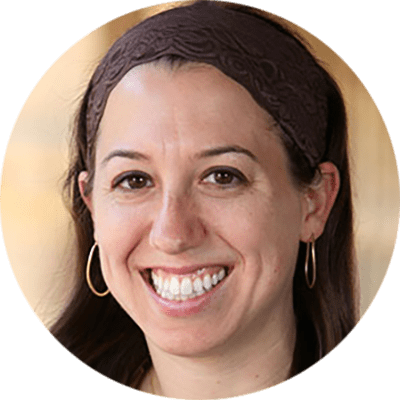
Teaching Tanakh: A New Perspective on Pedagogy
As many teachers of Tanakh know, the Tanakh classroom serves as a crucible for interpreting sacred texts, particularly in theologically and denominationally diverse day schools, camps, and beit midrash settings. The question I wish to explore here is: how do Jewish educators navigate the complex landscape of multiple orientations towards Tanakh that they might find in the seats of their classroom and make sure to empower all their students as interpreters? Central to my own Tanakh teaching, at almost every grade level, in almost every type of day school context, is the realization that my students don’t read Tanakh according to the same orientations or literacy practices, but it would be helpful if they did—at least for the duration of my class.

Tanakh Study and Reader Response
“My students insist on translating every pasuk (verse) into English and then using their translation to answer the questions. How can I get them to work from the makor (original text)?”“When I give in to their learned helplessness and teach them an interpretation, they can’t identify the problem in the pasuk that the interpretation comes to solve, and then they get stuck on the one understanding I presented and won’t consider an alternative. How can I help them think for themselves?” “I want my students to identify with the avot (patriarchs) and imahot (matriarchs) and learn from their example. But they somehow can’t relate to them as role models. What am I doing wrong?”Sound familiar? For years these complaints were a constant refrain from my Tanakh-teaching colleagues.
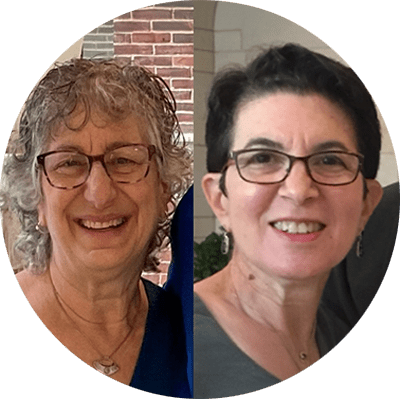
Vision, Lenses, and Focus: Bringing Clarity to Tanakh Curriculum with Standards
Any Tanakh text, whether narrative or legal, contains an abundance of ideas, elements, and complexities, and has the potential to raise countless questions. How does a school community decide which of them to pursue?Nechama Leibowitz, quoted by Shmuel Peerless in To Study and to Teach: The Methodology of Nechama Leibowitz, wrote that educators have……to decide what to leave out and what topics should not be touched, because it is pointless to tackle a number of different topics and problems superficially or incidentally in a chapter. It is preferable to concentrate on just a few topics, but in depth (p. 15). Standards serve as powerful tools for deliberating about a vision for Tanakh education and for shaping Tanakh curriculum once the school’s vision is clear.

Teaching Tanakh to Weaker Students
In my roles as a Tanakh teacher and an instructional coach, my goal is to inspire Tanakh students to become engaged, proud, and even passionate Jews, fluent in Jewish literacy and deeply committed to the future of Jewish education and community. This goal is daunting under the best of circumstances; when teaching Tanakh to weaker students, it becomes more so. In this article I will outline some of the most ubiquitous challenges that arise from teaching Tanakh to weaker students and offer suggestions for navigating them based on my own experience as well as conversations with other educators and research from the field. I believe that navigating these challenges requires both modifications in practice and shifts in mindset, and I will outline each of them.
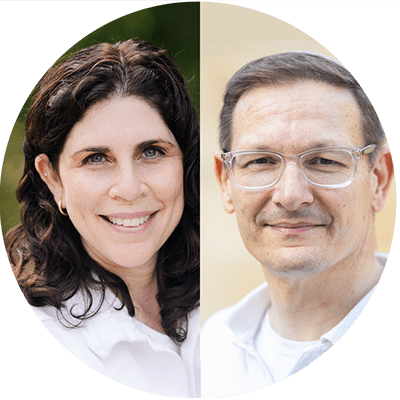
Student-Centered Learning in the Tanakh Classroom
For the past decade, educators have been using the term student-centered learning (SCL) but still finding it tricky and challenging to apply to the Tanakh classroom for a variety of reasons. One is the amount of time teachers must dedicate not only to teaching content but also to developing textual reading skills. Another is that teachers might feel reluctant to engage in a pedagogy they feel allows for too much free thinking and not enough respect for the mesorah, classical commentators, and tradition in general. Here we offer tips and strategies for how to introduce SCL into the Tanakh classroom in large and small ways. Differentiation and Social-Emotional Learning Are you differentiating in your classroom? Great! That’s one time-tested way to employ SCL in the Tanakh classroom.

Outside the Box: A Values-Based Approach to Parashat Hashavua
Tanakh in dialogueWhat position does the Tanakh occupy in the life of an early teen? For many, the Tanakh resides in the mental box into which school is commonly placed—a box of academic pursuits, Hebrew language and grammar, Jewish history and Biblical knowledge. There is nothing innately wrong with this, to the contrary, Tanakh study certainly can and does involve these important elements. But a missed opportunity arises when compartmentalisation precludes Tanakh from forming dialogue with the other “boxes” that rise to prominence in the early teen years.Early teenagehood is often marked by questioning and exploration as students begin a journey of seeking to understand that which may have previously gone unquestioned.

Building Tanakh Skills One Step at a Time With Manipulative Materials
“Give a man a fish,” the saying goes, “and you feed him for a day. Teach a man to fish and you feed him for a lifetime.” At Netivot, we have developed a Tanakh program that gives each child the personalized gift of feeding himself for a lifetime. The Montessori method is predicated upon the idea that each child, if provided developmentally appropriate opportunities, will inherently learn and grow and master at each phase of development according to his own individual needs. For this reason, in our classrooms, the expectation is not for children to memorize translations of text “chorally,” but rather to develop individually the skills to translate for themselves. Using key elements of the Montessori method, our students build a series of skills that allow them to tackle pesukim independently.

Bringing Nechama Leibowitz Into the Classroom
The written legacy of Nechama Leibowitz, in her gilyonot and books, has served and continues to serve as the basis for Torah study for many serious students of parashat hashavua, Tanakh, and parshanut. Her teaching methodology, as experienced by one of the authors of this article in 1988-89, in her weekly classes in her apartment in Jerusalem and in her weekly shiur at the Gruss Kollel, served as a model for how to teach Torah. Certain elements have been adapted, but we have found that her principle of encouraging independent thinking and individualized feedback gives students in middle school a personal connection with the text and empowers them to continue in their Torah study with positivity and self- assurance.
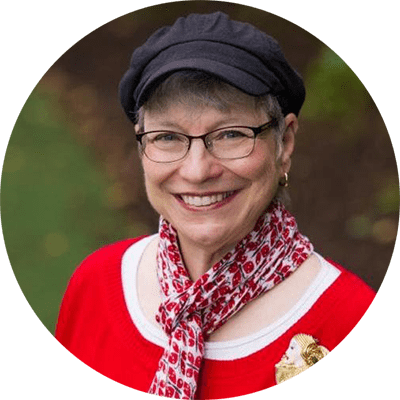
Opening the Middle School Window to Midrash
A number of years ago, when I was teaching the sections in Genesis about Abraham and Sarah to a girls’ middle school class, one of my students raised her hand and said, “I don’t like how much is missing in the Torah.” I asked her what she meant and she replied, thinking like a typical middle schooler, “Like, what did Abraham and Sarah talk about at night when they were just sitting around their tent?” After responding facetiously that Sarah probably asked Abraham what he thought about her new burka, I took the moment to answer the class seriously. This was a wonderful opportunity to deeply introduce my students to midrash as one way to fill in the “blanks” in the Torah text, to delve into the “spaces” in the text, and to teach us moral messages with which to inform our own lives.
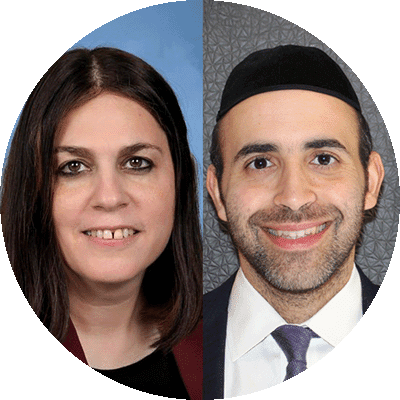
The Barkai Method for Teaching Humash
In the introduction to his book Who Knows Twelve, Rabbi Berel Wein explores a troubling phenomenon: the growing disconnect between the Jewish people and their sacred texts. Whatever the causes for its decline may have been, many Jewish day schools today are attempting to reinvigorate the study of Tanakh, recognizing its fundamental role in Jewish identity and education. Maimonides codified the necessity of studying Tanakh in Hilkhot Talmud Torah (1:7), asserting that it is a crucial component of Jewish life. Today, there is a growing recognition of the need to revive these ancient texts, which hold profound significance for Zionism, community, ethics, spirituality, identity, and much more. One noteworthy example of this revival is the Barkai educational system, developed in Israel by Rav Dan Be’eri more than 40 years ago.
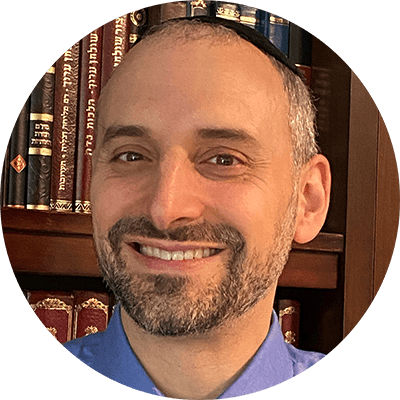
Introducing Sod Into the Tanakh Classroom
In my years of teaching Neviim and Ketuvim, one of my overarching goals was for students to gain an appreciation of why specific commentaries approached the same text differently. I spent significant time on both peshat and derash approaches, highlighting the strengths and weaknesses of each interpretation’s handling of textual issues. One experiment with introducing sod resonated deeply with some of the students and complemented the other work we were doing. I share that experiment here. Sod (literally, secret) is a mode of hermeneutical interpretation that sees the characters and storyline as being symbolic of fundamental themes. Although definitions of sod usually include mysticism, the relation to Kabbalah is only that sod reflects an interpretation that directly addresses giving insight into our relationship with God.

Heroes Within Reach
We read the Bible with the understanding that many of the characters described are our heroes, our Jewish archetypes. We pore over every action, every word, for insight into their thought and character, insight that can inform the same in us. These are not dry annals of the lives of figures from the distant past; these people are as alive today as we are—alive within us, within our synagogues and culture, because we study them so intensively and know them so intimately. Each of us knows the stories so well, that we know what happens between and behind the words.What is a Hero?But what does it mean to consider them heroes? In what sense does, or doesn’t, the Bible portray them as such? And more importantly, how does the Bible express what a hero is, and what makes someone heroic?
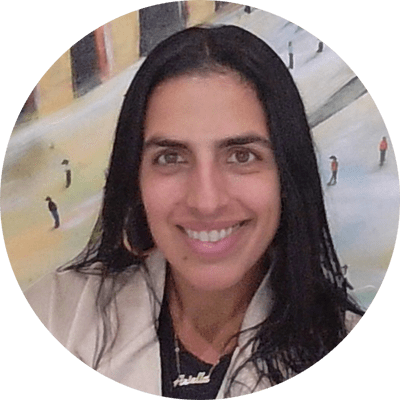
Tanakh as a Tool for Building Identity
Jewish tradition holds Torah teachers in high esteem, viewing them as more than just conveyors of knowledge. They are seen as spiritual and moral guides, shaping the character and identity of their students. In The Lonely Man of Faith, Rabbi Soloveitchik emphasizes that the role of the Torah teacher goes beyond intellectual instruction; they facilitate a divine encounter, guiding students toward a deeper connection with God. The Talmud (Bava Metzia 33a) elevates the honor due to a Torah teacher above even that of one’s parents, as the teacher introduces the student to the “world to come” through their instruction—a profound form of giving life. These texts paint a picture of the Torah teacher as a builder of Jewish identity, imparting values that help shape a student’s character and moral foundation.
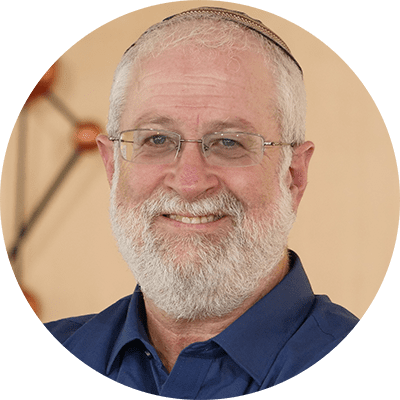
Tanakh as Our Story
Tanakh is the story of the Jewish people. This basic component of our identity and our tradition has tremendous spiritual and educational power which, unfortunately, is often untapped. In the following essay, we aim to show how this idea of Tanakh as the grand narrative of the Jewish people can be developed into a powerful educational opportunity. In tapping into Tanakh’s central narrative feature, we are not merely making Tanakh more interesting for our students. Since the times of Moses, the Jewish people has known that a good story does more than just pique an audience’s interest. In the words of Rabbi Sacks, “The Israelites had not yet left Egypt, and yet already Moses was telling them how to tell the story. That is the extraordinary fact. Why so? Why this obsession with storytelling?
Reach 10,000 Jewish educational professionals. Advertise in the upcoming issue of Jewish Educational Leadership.






